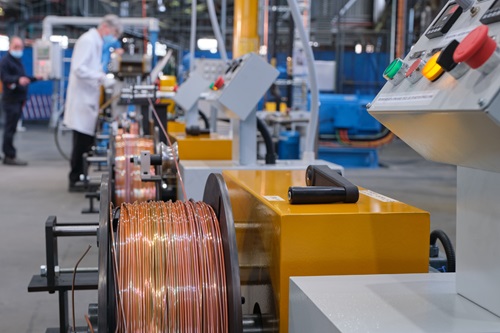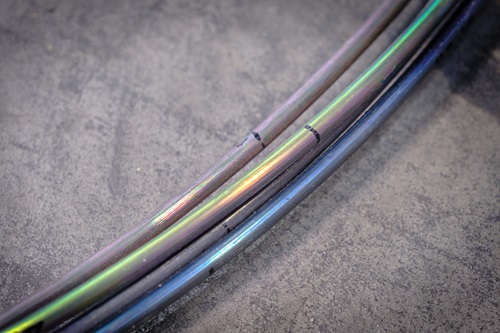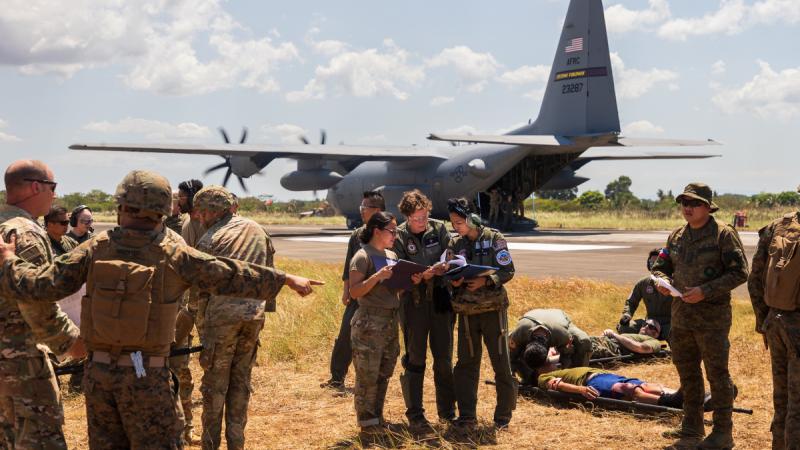The team is the first in Australia to produce titanium wire this way.
CSIRO Team Leader, Dr Robert Wilson, said the researchers used low-cost titanium alloy particulates like machining swarf to produce a wire that can be used to make 3D printed parts such as aerospace components.
“The result is a product that is significantly cheaper than titanium wire made by conventional processes,” Dr Wilson said.
The wire is being fine-tuned for use in large format additive manufacturing such as Sciaky electron beam manufacturing and Wire Arc Additive Manufacturing (WAAM) – processes that melt the wire to form beads that stick together to create a layer of metal material that is then built up to form the 3D printed part.
The global market for titanium wire is worth over $200 million (AUD).
There is a lucrative market for 2.5mm to 3mm titanium wire as feed for this type of wire-additive manufacturing, and the cheaper wire generated from recycled sources can also be used to produce metal powders for 3D printing.
The patented wire extrusion process, which is optimised using computational modelling, is being demonstrated to produce 50kg of titanium wire at pilot scale. The team is working to scale this up to 100-300kgs pre-commercial volumes over coming months.
Director of the Australasian Wire Industry Association, Richard Newbigin, said Australia is well represented in various types of wire manufacturing, but until now has lacked sovereign capability in wire production for additive manufacturing.
“Currently, Australian additive manufacturers have to source their titanium wire offshore, but this new capability will change that,” Mr Newbigin said.
CEO of additive manufacturing company Amaero International, Barrie Finnin, agrees that locally produced titanium alloy wire and powders offer a valuable local capability for Australia’s growing additive manufacturing sector.
“This technology has the potential to put Australia on the map as a competitive supplier of aerospace grade titanium alloy wire for additive manufacturing and will greatly impact on our global competitiveness,” Mr Finnin said.
“Even better, the end product will be comparable to what is currently available overseas, but much cheaper because it is using waste product.”
The wire can be used to make large complex parts for markets such as aerospace, biomedical, defence, marine, automotive, construction and consumer goods.
This research is supported by the Science and Industry Endowment Fund.
Images








